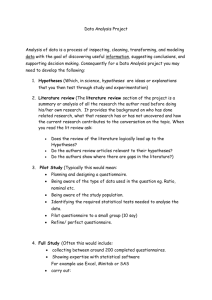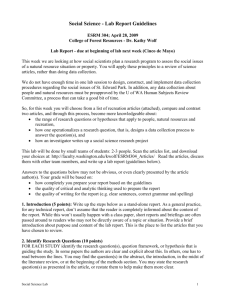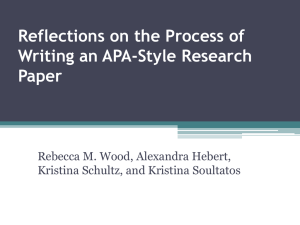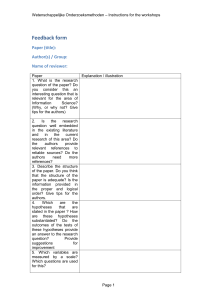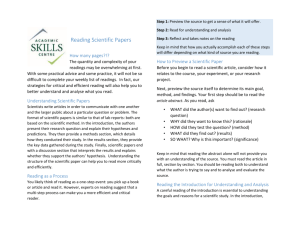a Psychological Research Article
advertisement
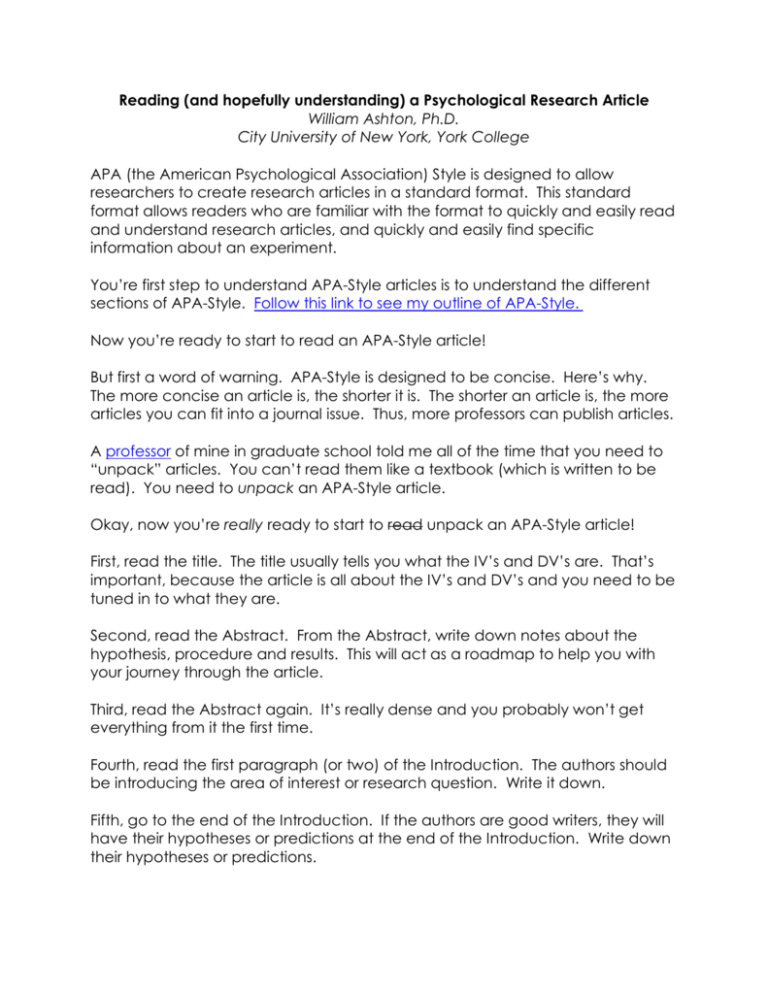
Reading (and hopefully understanding) a Psychological Research Article William Ashton, Ph.D. City University of New York, York College APA (the American Psychological Association) Style is designed to allow researchers to create research articles in a standard format. This standard format allows readers who are familiar with the format to quickly and easily read and understand research articles, and quickly and easily find specific information about an experiment. You’re first step to understand APA-Style articles is to understand the different sections of APA-Style. Follow this link to see my outline of APA-Style. Now you’re ready to start to read an APA-Style article! But first a word of warning. APA-Style is designed to be concise. Here’s why. The more concise an article is, the shorter it is. The shorter an article is, the more articles you can fit into a journal issue. Thus, more professors can publish articles. A professor of mine in graduate school told me all of the time that you need to “unpack” articles. You can’t read them like a textbook (which is written to be read). You need to unpack an APA-Style article. Okay, now you’re really ready to start to read unpack an APA-Style article! First, read the title. The title usually tells you what the IV’s and DV’s are. That’s important, because the article is all about the IV’s and DV’s and you need to be tuned in to what they are. Second, read the Abstract. From the Abstract, write down notes about the hypothesis, procedure and results. This will act as a roadmap to help you with your journey through the article. Third, read the Abstract again. It’s really dense and you probably won’t get everything from it the first time. Fourth, read the first paragraph (or two) of the Introduction. The authors should be introducing the area of interest or research question. Write it down. Fifth, go to the end of the Introduction. If the authors are good writers, they will have their hypotheses or predictions at the end of the Introduction. Write down their hypotheses or predictions. Sixth, now that you have the research question and the hypotheses or predictions, read the rest of the Introduction. Going through steps four and five first allow you to follow the logic of the authors more easily. Write down important information from the Introduction in your notes. Seventh, skip the Methods and Results sections! Go right to the Discussion (or in the case of articles with multiple studies the General Discussion). At the beginning of the Discussion the authors discuss whether their hypotheses or predictions were supported in plain English, without any statistical jargon! Yeah! The authors should do this thoroughly enough so that you may not need to look at the Results section at all! Note whether their hypotheses were supported. Eighth, read the latter parts of the Discussion section. The authors should discuss their results (again, in English) in relationship to the past research and theories they discussed in the Introduction. The authors should also discuss the limitations of their study or problems with their study. Finally, the authors might discuss the practical implications of their results. Ninth, if you need to, read the Methods section to learn specifics about their research methods. Tenth, if you need to, read the Results section to learn specifics about their statistical tests and results. Don’t be intimidated by the statistics or the names of the tests (t-test, F-test, Chi-squared). Ignore that and focus upon what they say about the tests. Most often the authors will clearly describe (in English) what happened.

